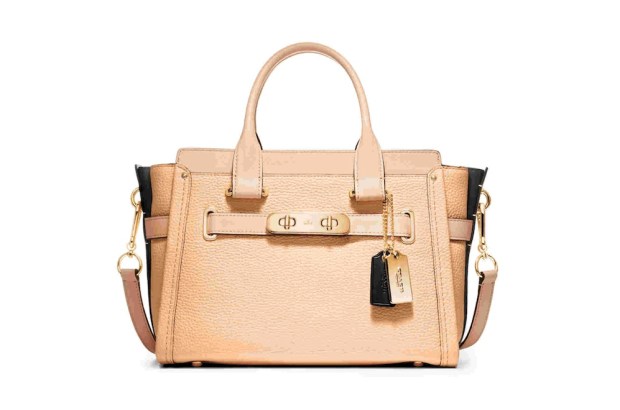Coach Notches A Solid Quarter Betting On Exclusivity

Coach is rethinking the accessible luxury approach that has been a go-to strategy for various high-end brands in recent times. Lots of store openings and department store partnerships later, Coach is wondering if too much ubiquity is not such a good thing when one is a luxury brand that trades on being exclusive.
Coach is now going after a less-is-more approach, exiting some 250 U.S. department stores in favor of its own stores (and the most productive department stores).
And so far, the turnaround is notching some success. Coach reported a 2 percent increase in North American comparable sales for the most recent quarter, its second period for growth in a sea of declines over the last several years.
“We are pulling back on distribution because I think the footprint we were in was just bigger than where the brand is,” Coach’s North American president, André Cohen, told Fortune.
In addition to pulling back, Coach is also limiting markdowns department stores are allowed to make, concerned by the high level of promotions those stores are employing to try to stanch their own sales bleeding. Macy’s, Coach’s single biggest department store partner, has reported declining sales for six straight quarters. Nordstrom has similarly been struggling.
“The constant discounting in department stores was affecting brand perception,” Cohen said.
The company is in the middle of a five-year turnaround plan that is the brainchild of CEO Victor Luis, who has additionally shut down 20 percent of Coach’s standalone stores and rebranding as a “lifestyle” brand instead of its traditional line in accessories, bags and shoes. Coach is additionally remodeling many of its stores with an eye toward a sleeker, more high-end look.
At some stores, Coach has also opened “craftsmanship bars” to showcase the workmanship that goes into the 75-year-old brand’s wares.
And it is paying off. Handbags that cost $400 or more generate more than half of that category’s sales, up from 30 percent a year ago.
“We are, at the highest levels, moving from the lowest common denominator in pricing to a more innovative, more emotional positioning that provides consumers something they can’t find elsewhere,” Luis told Fortune.
